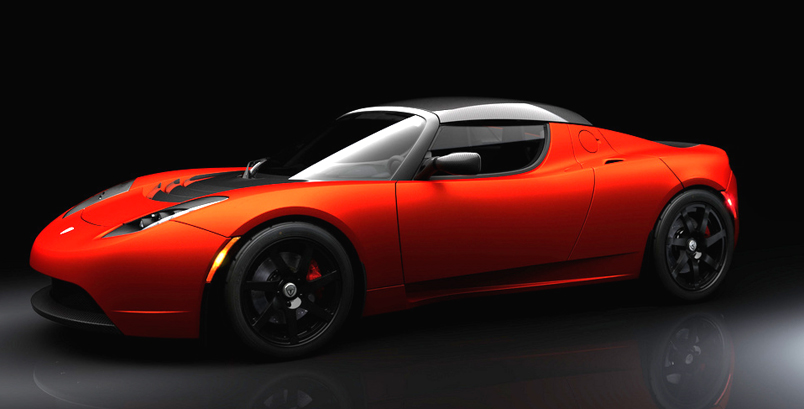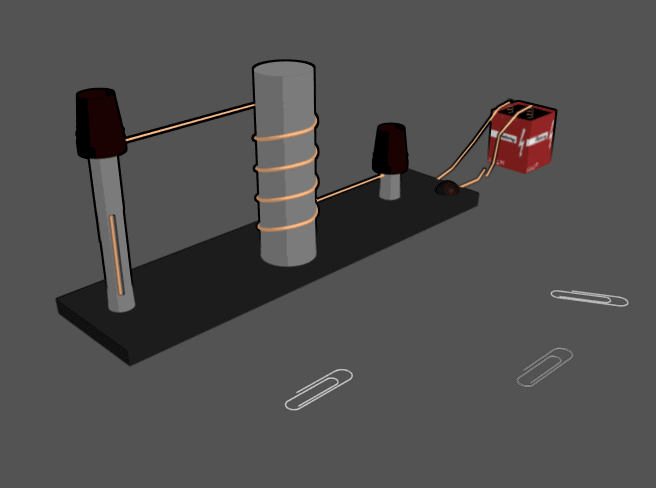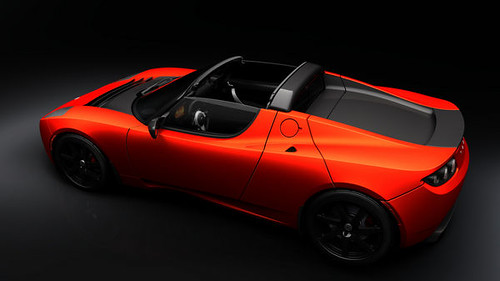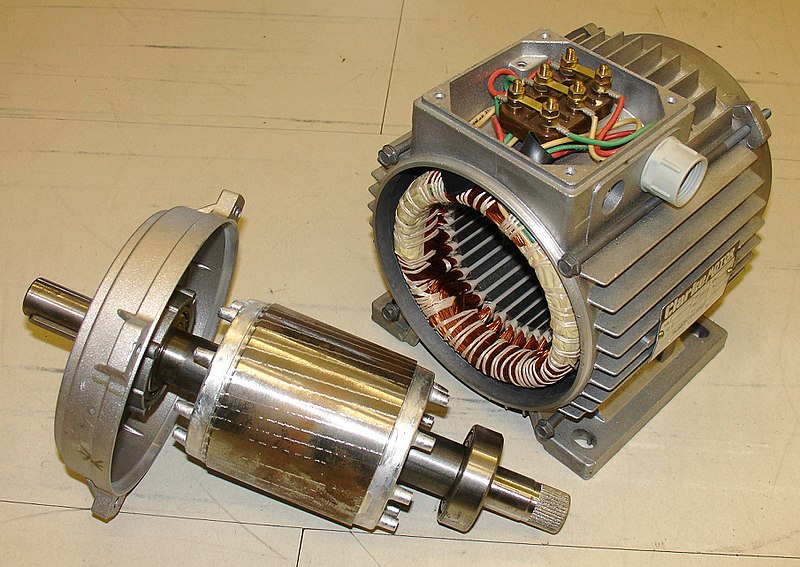John Whalen’s 1972 Datsun 1200 is powered by 60 lead-acid batteries in his trunk and back seat. In a quarter mile, he can hit speeds of 107 miles per hour in less than 12 seconds. In this OPB special you see Whalen and his “White Zombie” whip up on muscle cars at the dragstrip. Towards the end you see him set world records after he is loaned A123 Systems lithium ion batteries, increasing horsepower and lightening the car by 700 pounds.
Monthly Archives: January 2009
Shelby SuperCars Making Incredible Electric Powertrain Claims
Shelby Supercars has been developing its Ultimate Aero EV for about half a year now in an attempt to create the fastest production EV in the world. They hinted that they had breakthorough technology earlier. Now, they are making some pretty incredible battery technology claims. This pretty much sums it up:
SSC’s Nanotechnology Rechargeable Lithium Battery pack is rechargeable in only 10 minutes on a standard 110 outlet and has a 150-200 mile range on a single charge.
PRESS RELEASE:
Shelby SuperCars Announces Green/EV Technology Details
 WEST RICHLAND, WA : January 21, 2009 – Shelby SuperCars (SSC) released the details today of the revolutionary electric vehicle technology to be unveiled in the second quarter of this year. SSC will reveal its innovative all-electric powertrain in the current Ultimate Aero, the Guinness Certified “Fastest Production Car in the World,” to create the Ultimate Aero EV and will reinforce the company as a benchmark in the auto industry. But unlike other auto manufacturers, SSC’s new technology will set a new standard in the electric car industry – one of 10 minute recharges, super horsepower and ranges of up to 200 miles per charge.
WEST RICHLAND, WA : January 21, 2009 – Shelby SuperCars (SSC) released the details today of the revolutionary electric vehicle technology to be unveiled in the second quarter of this year. SSC will reveal its innovative all-electric powertrain in the current Ultimate Aero, the Guinness Certified “Fastest Production Car in the World,” to create the Ultimate Aero EV and will reinforce the company as a benchmark in the auto industry. But unlike other auto manufacturers, SSC’s new technology will set a new standard in the electric car industry – one of 10 minute recharges, super horsepower and ranges of up to 200 miles per charge.
While other auto manufacturers focus on producing Green technology for specific cars, SSC’s focus is on producing Green technologies for a wide range of applications for an even wider range of vehicles. SSC’s electric powertrain package, named AESP (All-Electric Scalable Powertrain) is unique due to its scalable horsepower, light weight, compact size, quick recharge time and liquid cooling.
SSC’s Nanotechnology Rechargeable Lithium Battery pack is rechargeable in only 10 minutes on a standard 110 outlet and has a 150-200 mile range on a single charge. This means that in a typical 8 hour day, the car using this technology could go 200 miles, charge for 10 minutes (the time it typically takes to fill up a tank of gas), then drive 200 more miles, charge for 10 minutes and continue on. Some other EV technologies necessitate an overnight charge creating a class of “commuter electric cars” and are not practical alternatives to gas combustion automobiles.
The AESP’s main feature is its scalability. The all-electric SUV or delivery truck is now a reality in the not-so-distant future. The AESP is scalable from 200 horsepower for economy and midsize cars, to 500 horsepower for light trucks and SUVs, and up to 1200 horsepower for delivery trucks, heavy duty equipment, buses and military vehicles. The revolutionary design proves electric-powered vehicles not only match, but also provide more linear power (electric motors have 100% torque at 0 RPM) and overall performance than internal combustion vehicles.
SSC Electric Powertrain Technology
* All-electric. No gasoline.
* Light weight. Just a fraction of the weight of a standard combustion engine (less than 200lbs.)
* Extended performance. Internal cooling systems are built into the motors.
* Compact size. 1/18 the space of a standard engine; significant increase in cargo room.
* Scalable horsepower. From 200 horsepower (one motor) to 1200 horsepower (two motors “piggy backed”).
* Quick recharges. Only 10 minutes on standard 110 outlet.
The current AESP was designed to meet the manufacturing and quality requirements of major automotive manufacturers, transportation operators and the military. SSC will wholesale the AESP to mass production car companies, governments, and to public, private, and niche businesses. Costs for mass-produced units are $5K-$6K per unit for 1000 to 10,000 units (with further reduction in unit cost for increased production.)
SSC’s next milestone will be the pursuit of the “World’s Fastest Electric Car” with the Ultimate Aero EV later this year.
Source: Autobloggreen
Inside the Tesla Roadster Sport

Tesla recently announced its Roadster Sport edition. To be succinct, the Sport powers from 0-60 mph in 3.7 seconds (.2 seconds faster than the base model), has a sweet HEMI muscle car like orange and black paint job, Yokohama performance tires, custom suspension, and blacked out rims.
So how do you get more juice out of an electric motor? You can’t add performance headers and intakes or any fun widgets like turbo and superchargers. So Tesla hand wound the wires that wrap around the stator to create more power. The stator is the stationary part of an electric generator or electric motor. The non-stationary part on an electric motor is the rotor. Here is a picture of a traditional rotor (left) and stator (right):

The stator is an electromagnet (see left), meaning when an electric current passes through it, the rotor is magnetically attracted to spin in a certain direction. So if you hand spin the wires into the stator, you can pack more wires in, allowing more electrical current to pulse through each segment. The more powerful current sequentially magnetizes each segment and spins the attracted rotor faster. Also, I’m not an electrical engineer so you can correct me in the comments section.
The Tesla Roadster is powered by a 3-phase, 4-pole electric motor, producing a maximum net power of 248 hp (185kW). The Sport Model, with its higher density, hand wound stator produces a maximum of 288 hp (215 kW). Both motors are designed for rotational speeds of up to 14,000rpm, and the regular motor delivers an efficiency of typically 90%, or 80% at peak power. Couple this with Tesla’s new Powertrain 1.5, and you have one of the meanest electric machines ever produced.

Sources: Wikepedia: Stator, Tesla Motors, Jalopnik
Press Release:
Tesla Motors introduces Roadster Sport
SAN CARLOS, Calif.—(BUSINESS WIRE)—Tesla Motors Inc. began taking orders today for the Roadster Sport, a high-performance sports car based on the world’s leading all-electric, zero-emission vehicle.
The Roadster Sport does 0 to 60 mph in 3.7 seconds, compared with 3.9 seconds for the standard Roadster. It comes with a hand-wound stator and increased winding density for lower resistance and higher peak torque. In addition to Yokohama’s Ultra High Performance tires, the Roadster Sport has improved suspension with adjustable dampers and anti-roll bars that will be tuned to the driver’s preference.
The Roadster Sport starts at $128,500 in the United States and €112,000 (excluding VAT) in Europe. Deliveries begin in late June.
“This car can beat nearly anything in its price class – yet it is twice as efficient as compact hybrid sedans,” said Michael van der Sande, Tesla’s senior vice president of global sales, service and marketing. “If you refuse to compromise on performance or the environment, the Roadster Sport is your only option.”
The Roadster Sport is the first derivative of Tesla’s proprietary, patented powertrain. San Carlos, Calif.-based Tesla plans to begin producing the all-electric, zero-emssion Model S five-passenger sedan in 2011.
Tesla has delivered more than 150 Roadsters to customers, and about 1,100 people are on the waiting list. Customers who haven’t taken delivery may upgrade to the Roadster Sport.
“The Roadster Sport embodies Tesla’s spirit of continuous improvement,” said CEO, Chairman and Product Architect Elon Musk. “The Roadster has been a great success, but no one at this company remains satisfied with the status quo.
Chrysler Continues Electric Push with 200C
Chrysler unveiled another electric car from its ENVI program at the 2009 Detroit Auto Show. Stylistically, it could be best compared to a Mercedes CLS. And really, for Chrysler, this is a great looking car. The 200c is a range extended electric vehicle, so the car will be a able to travel 40 miles with zero emissions before a 2-cylinder turbocharged (most likely) engine will kick in to recharge the batteries and extend the range to over 300 miles. Here is a video that gives you a good look at the car:
NYT Drives Ford’s Electric Prototype
Ford is finally making a concerted effort to enter the EV race. They recently announced an all-electric sedan scheduled to go on sale in 2011. It is likely to be based on the next-generation Ford Focus. The New York Times had the honor of driving the mule. In the video, the NYT columnist gets to drive the car and experience the smooth, quiet ride. Performance looks comparable to a traditional Ford Focus and they even pop the hood to show you how Ford set up the electric powertrain. Click here to see the video.
Source: Autobloggreen
Dodge Circuit on the Test Track

The renamed and remodeled Dodge Circuit (Dodge EV) was spotted on the test track recently. The Tesla killer was given Dodge’s signature cross grill as well as numerous other aesthetic changes. It definitely looks more like a Dodge than a Lotus now.

